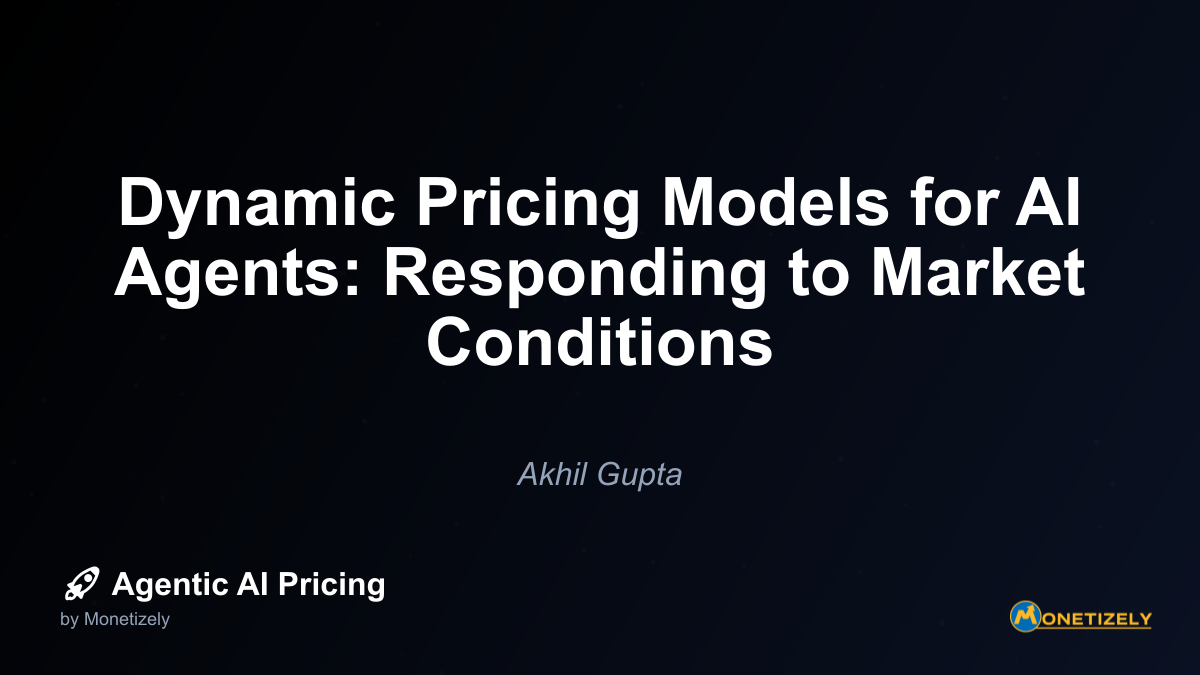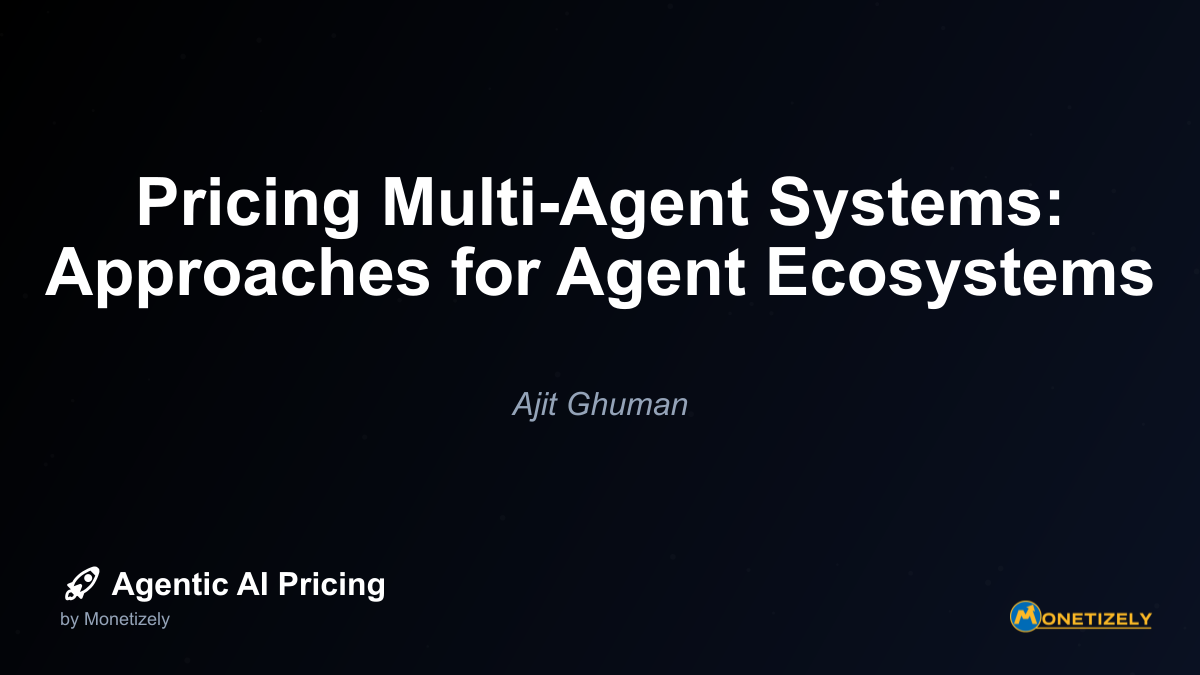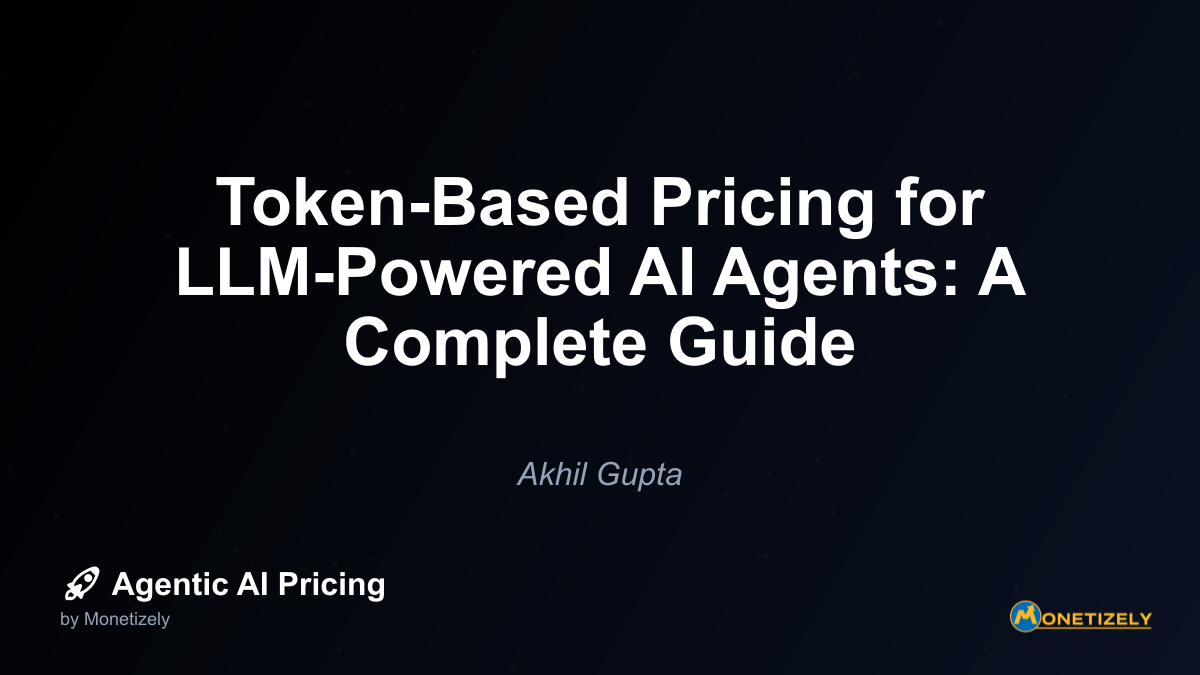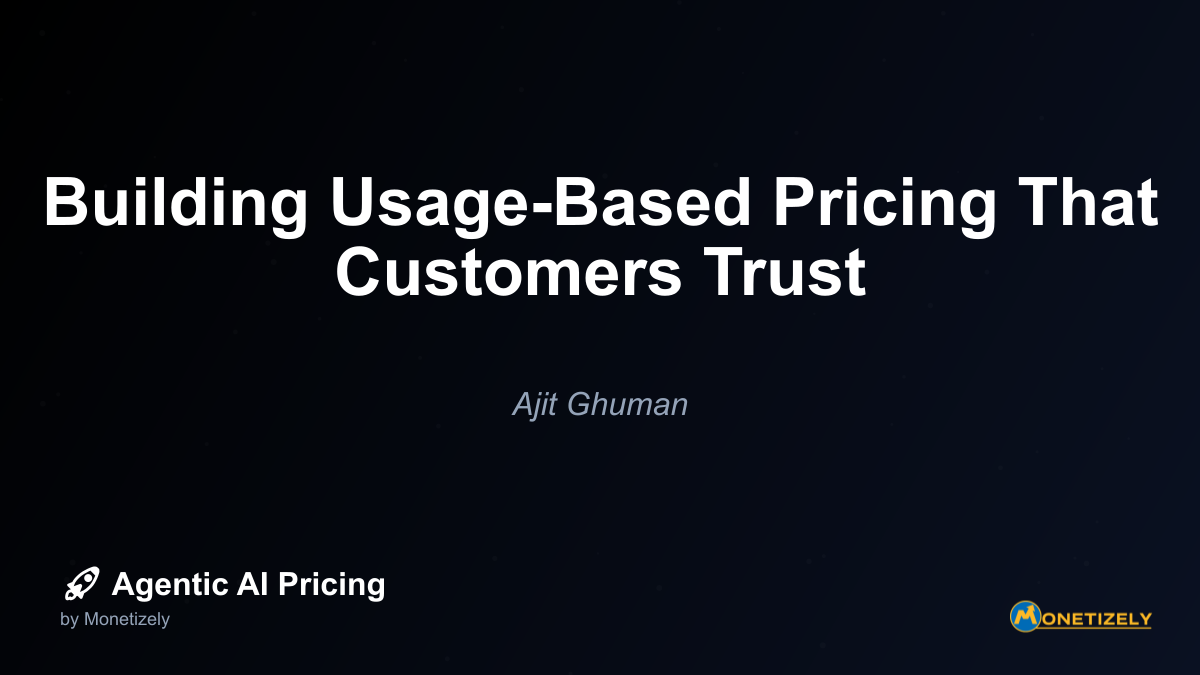· Akhil Gupta · AI Pricing Models · 12 min read
Seasonal and Demand-Based Pricing for AI Services
AI and SaaS Pricing Masterclass
Learn the art of strategic pricing directly from industry experts. Our comprehensive course provides frameworks and methodologies for optimizing your pricing strategy in the evolving AI landscape. Earn a professional certification that can be imported directly to your LinkedIn profile.
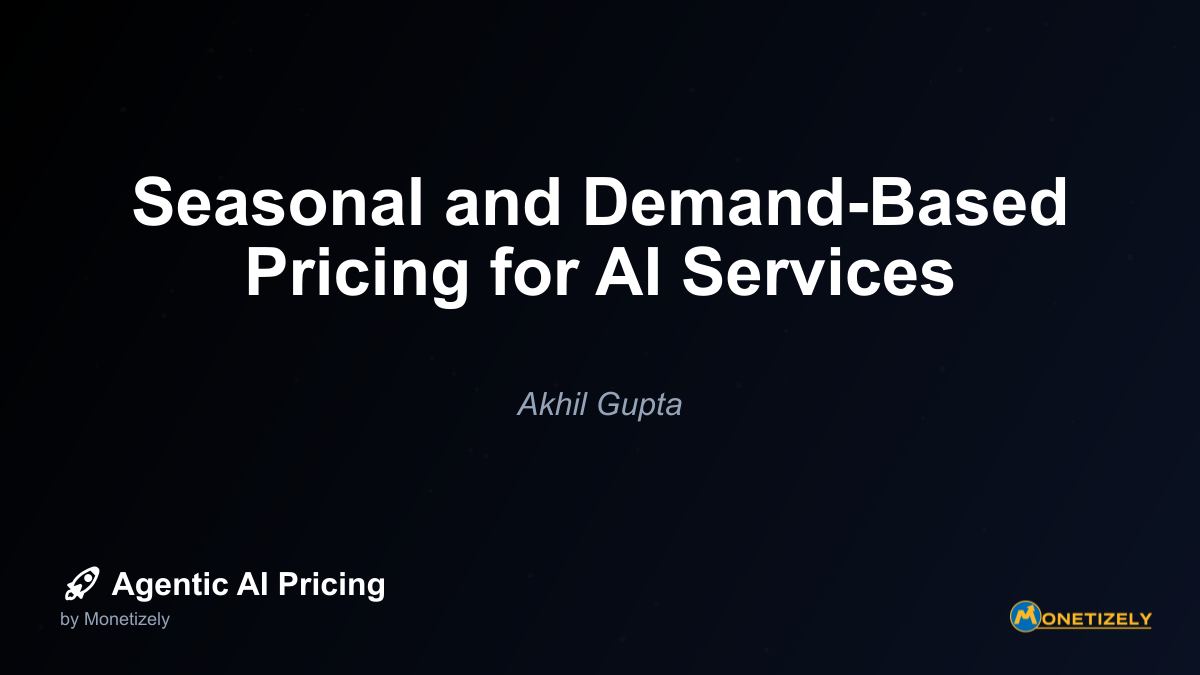
In today’s dynamic AI service landscape, businesses face a critical challenge: how to price their offerings to reflect fluctuating demand patterns while maximizing revenue and maintaining customer satisfaction. Seasonal and demand-based pricing strategies have emerged as powerful solutions, enabling companies to align their pricing models with market realities and operational costs.
Understanding the Evolution of AI Service Pricing
The AI market is experiencing unprecedented growth, exceeding $184 billion in 2024 and projected to surpass $826 billion by 2030. This explosive expansion is driving significant changes in how AI services are priced. Traditional seat-based pricing models are rapidly declining, dropping from 21% to 15% among AI companies in 2025, as businesses recognize the limitations of static pricing approaches in a market characterized by variable demand and usage patterns.
“The companies still clinging to seat-based models are seeing 40% lower gross margins and significantly higher customer churn,” notes a recent industry analysis from Pilot.com. “The future clearly belongs to dynamic, usage-based pricing that reflects actual value delivery.”
This shift represents a fundamental rethinking of how AI services should be monetized. Rather than charging flat fees regardless of usage patterns or market conditions, forward-thinking companies are implementing sophisticated pricing strategies that respond to seasonal trends, demand fluctuations, and even individual customer behaviors.
The Business Case for Seasonal and Demand-Based Pricing
Implementing dynamic pricing strategies offers compelling advantages for AI service providers:
1. Revenue Optimization Across Demand Cycles
Seasonal and demand-based pricing allows companies to capture maximum value during peak periods while maintaining competitive rates during slower times. This approach smooths revenue across the year and increases overall profitability by aligning prices with customers’ willingness to pay at different times.
2. Infrastructure Cost Management
For AI service providers, infrastructure costs (cloud computing, GPUs) represent a significant operational expense, with 67% of AI startups citing these costs as their primary growth constraint. Dynamic pricing helps companies recover higher infrastructure costs during peak usage periods, ensuring sustainable operations while remaining competitive during quieter periods.
3. Customer Acquisition and Retention Balance
Strategic pricing flexibility enables companies to attract price-sensitive customers during low-demand periods without sacrificing revenue during high-demand seasons. This balanced approach supports both customer acquisition and retention goals.
4. Competitive Differentiation
In an increasingly crowded AI service market, sophisticated pricing strategies can serve as a competitive differentiator. Companies that effectively communicate the value and fairness of their dynamic pricing approach can stand out from competitors with more rigid pricing models.
Key Components of Effective Seasonal and Demand-Based Pricing
Implementing successful dynamic pricing requires several interconnected elements:
Data-Driven Demand Forecasting
The foundation of effective seasonal pricing is accurate demand prediction. AI-powered forecasting models analyze historical data, market trends, and external factors to anticipate demand fluctuations with unprecedented precision.
“Advanced ML models now forecast demand patterns both seasonally and dynamically,” explains a recent industry report, “allowing companies to preemptively adjust prices, avoiding revenue losses and customer dissatisfaction during peak or low demand periods.”
These forecasting capabilities have become increasingly sophisticated, incorporating:
- Historical usage patterns across multiple timeframes (daily, weekly, monthly, yearly)
- External factors like industry events, holidays, and economic indicators
- Competitive pricing data and market positioning
- Customer segment behavior and price sensitivity
Dynamic Pricing Algorithms
Building on demand forecasts, AI services employ various pricing algorithms to determine optimal rates:
Time Series Forecasting
This approach analyzes historical data patterns to predict future demand, identifying seasonal trends and cyclical patterns that influence pricing decisions. Time series forecasting is particularly valuable for services with predictable seasonal variations.
Reinforcement Learning (RL)
RL algorithms enable pricing systems to learn optimal strategies through continuous interaction with the market environment. By balancing exploration (testing new pricing approaches) with exploitation (leveraging successful strategies), RL systems can adapt to changing market conditions in real-time.
Machine Learning Classification Models
These models segment customers based on behavior, willingness to pay, and usage patterns, enabling personalized pricing strategies that maximize revenue while maintaining customer satisfaction.
Real-Time Adjustment Capabilities
Modern AI pricing systems can adjust rates in near real-time based on current demand signals, competitor actions, and available capacity. This responsiveness ensures that prices remain optimal even during unexpected demand fluctuations.
Industry-Specific Applications and Case Studies
Different industries are applying seasonal and demand-based pricing in ways that reflect their unique market dynamics and customer expectations:
Retail and E-commerce
AI-powered pricing has revolutionized retail pricing strategies, particularly for seasonal merchandise. Companies analyze historical sales data, inventory levels, and market trends to optimize pricing throughout product lifecycles.
Case Study: Impact Analytics’ Seasonal Retail Solution
Impact Analytics has developed an AI-driven pricing solution that helps retailers optimize seasonal merchandise pricing. The system analyzes historical sales patterns, inventory levels, and competitive pricing to recommend optimal markdown strategies throughout the season. Retailers using this solution have reported margin improvements of 3-5% and reduced end-of-season inventory by up to 30%.
“Our AI models identify the ideal timing and depth of markdowns based on product lifecycle stage, current sell-through rates, and remaining season duration,” explains Impact Analytics’ CEO. “This prevents both premature discounting that sacrifices margin and delayed markdowns that result in excess inventory.”
SaaS and Cloud AI Services
Cloud-based AI service providers face unique challenges in pricing their offerings, as computing costs fluctuate with usage intensity and infrastructure demands.
Case Study: Microsoft Azure AI’s Tiered Usage Pricing
Microsoft Azure AI employs a sophisticated demand-based pricing model that combines predictable enterprise licensing with usage-based components. During periods of peak demand, the system implements tiered pricing that maintains service quality while recovering higher infrastructure costs. This approach has helped Microsoft balance revenue predictability with cost recovery, achieving gross margins 15-20% higher than competitors with purely fixed pricing models.
Logistics and Transportation
The logistics industry experiences significant seasonal demand variations, making it an ideal candidate for dynamic pricing strategies.
Case Study: Ontruck’s AI-Optimized Logistics Pricing
Ontruck utilizes AI models for buy-price and sell-price optimization that reflects seasonal demand fluctuations in the logistics industry. Their system observes that prices typically dip by 10-15% in low-demand months (January-February) and peak in July. Their AI integrates geographical and temporal factors like congestion or terrain to adjust pricing with granular precision, helping them maintain profitability throughout the year while remaining competitive during slower periods.
Hospitality and Property Management
The hospitality industry has long employed seasonal pricing, but AI has transformed these strategies through more sophisticated demand forecasting and price optimization.
Case Study: RentalReady’s Dynamic Property Pricing
RentalReady’s AI pricing platform analyzes local events, historical booking patterns, and competitive rates to optimize property rental pricing throughout the year. Property managers using the platform report 15-20% revenue increases through more strategic seasonal pricing, particularly during shoulder seasons when traditional pricing approaches often leave money on the table.
“Our AI doesn’t just look at historical occupancy,” notes RentalReady’s product manager. “It analyzes hundreds of factors including lead booking times, local events, competitor availability, and even weather forecasts to identify optimal pricing opportunities throughout the year.”
Implementation Strategies: From Planning to Execution
Successfully implementing seasonal and demand-based pricing requires a structured approach:
1. Comprehensive Data Collection and Integration
Effective dynamic pricing begins with robust data collection. Companies must integrate:
- Historical sales and usage data
- Customer segmentation information
- Competitive pricing intelligence
- Market and economic indicators
- Seasonal event calendars and demand drivers
This data foundation supports accurate forecasting and pricing decisions. Companies typically need 12-24 months of historical data to identify meaningful seasonal patterns.
2. Algorithm Selection and Customization
Different business models require different pricing algorithms. Companies should select and customize approaches based on:
- Business objectives (revenue maximization, market share growth, etc.)
- Data availability and quality
- Market volatility and predictability
- Customer price sensitivity
- Competitive landscape
Many organizations employ multiple algorithms in parallel, comparing recommendations before finalizing pricing decisions.
3. Testing and Validation
Before full implementation, thorough testing is essential:
- A/B Testing: Apply different pricing strategies to similar customer segments to measure impact
- Shadow Testing: Run new pricing algorithms in parallel with existing approaches without implementing changes
- Limited Rollouts: Test new pricing in specific markets or segments before broader implementation
- Simulation Testing: Use historical data to simulate outcomes of new pricing approaches
These testing approaches help identify potential issues and refine strategies before full deployment.
4. Infrastructure and Integration
Technical implementation requires:
- Scalable cloud infrastructure with compute capabilities (GPUs or TPUs) for running ML/AI models
- Real-time data ingestion pipelines
- Integration with existing e-commerce or service platforms
- Reporting and analytics dashboards
- Automated price adjustment mechanisms
Companies must ensure their technical infrastructure can support real-time pricing adjustments without disrupting customer experience.
5. Customer Communication Strategy
Effective communication is critical when implementing dynamic pricing:
- Transparency: Explain pricing approach and factors influencing rates
- Value Articulation: Help customers understand the benefits they receive at different price points
- Advance Notice: When possible, provide advance notice of significant pricing changes
- Educational Content: Develop resources explaining your pricing philosophy
Clear communication helps prevent customer confusion and builds trust in your pricing approach.
Measuring Success: KPIs for Dynamic Pricing Strategies
Evaluating the effectiveness of seasonal and demand-based pricing requires tracking specific metrics:
Financial Metrics
- Revenue Growth: Increase in total revenue attributed to dynamic pricing adjustments
- Profit Margins: Improvement in margins by optimizing prices without excessive discounting
- Average Revenue Per User (ARPU): Changes in customer value across different seasons
- Price Realization: Actual revenue versus potential revenue at list prices
Operational Metrics
- Forecast Accuracy: Comparing predicted demand against actual usage
- Price Adjustment Frequency: How often prices change in response to market conditions
- System Performance: Technical metrics related to pricing system responsiveness
Customer-Focused Metrics
- Conversion Rates: Percentage of prospects who purchase at dynamically set prices
- Customer Satisfaction: Feedback specific to pricing fairness and transparency
- Retention Rates: Impact of pricing strategies on customer loyalty
- Price Sensitivity: Measuring how demand changes in response to price adjustments
Ethical Considerations and Best Practices
Implementing dynamic pricing raises important ethical considerations that companies must address:
Fairness and Transparency
Customers expect pricing to be fair and transparent, even when it fluctuates. Companies should:
- Clearly communicate pricing methodologies
- Ensure price differences are justifiable based on cost, demand, or other legitimate factors
- Avoid discriminatory pricing practices that might disadvantage specific customer groups
Data Privacy and Usage
Dynamic pricing relies on extensive data analysis, raising privacy concerns:
- Ensure compliance with data protection regulations
- Obtain appropriate consents for data usage
- Anonymize customer data used in pricing algorithms
- Maintain robust data security practices
Avoiding Perception of Price Gouging
During demand spikes, particularly those related to emergencies or essential services, companies must avoid pricing that could be perceived as exploitative. Implementing reasonable caps on price increases during extreme demand events can protect brand reputation.
Differences in Approach by Company Size
Company size and resources significantly influence how organizations implement seasonal and demand-based pricing:
Startups and Small Businesses
Smaller companies typically approach dynamic pricing with:
- Third-party solutions: Leveraging existing platforms rather than building custom systems
- Simplified models: Using less complex algorithms with fewer data inputs
- Agile testing: Rapidly iterating pricing approaches based on market feedback
- Direct customer communication: Personally explaining pricing changes to key clients
- Focused implementation: Starting with high-impact seasonal adjustments before expanding
Enterprise Organizations
Larger companies implement more sophisticated approaches:
- Custom solutions: Building proprietary pricing systems integrated with enterprise architecture
- Multi-factor models: Incorporating numerous variables into pricing decisions
- Extensive testing: Conducting comprehensive validation across markets and segments
- Formal governance: Establishing pricing committees and approval processes
- Phased rollouts: Implementing changes through structured, multi-stage deployments
Common Pitfalls and How to Avoid Them
Companies implementing seasonal and demand-based pricing should be aware of potential challenges:
1. Algorithmic Bias and Overreliance on Automation
Pitfall: Allowing algorithms to make pricing decisions without human oversight can lead to inappropriate pricing in unusual circumstances.
Solution: Implement human review processes for significant price changes and regularly audit algorithm outputs for unexpected patterns.
2. Insufficient Historical Data
Pitfall: Making seasonal pricing decisions without adequate historical data to identify meaningful patterns.
Solution: Supplement internal data with industry benchmarks and analogous market data until sufficient historical information is available.
3. Poor Communication Leading to Customer Backlash
Pitfall: Implementing dynamic pricing without adequately explaining the approach to customers.
Solution: Develop a comprehensive communication strategy that educates customers about your pricing philosophy before implementing significant changes.
4. Neglecting Competitive Response
Pitfall: Failing to consider how competitors will react to your dynamic pricing strategy.
Solution: Include competitive modeling in your pricing approach and monitor market responses to your pricing changes.
5. Technical Implementation Challenges
Pitfall: Underestimating the technical complexity of implementing real-time pricing adjustments.
Solution: Conduct thorough technical assessment and consider phased implementation to manage complexity.
The Future of Seasonal and Demand-Based Pricing in AI Services
Looking ahead, several trends will shape the evolution of dynamic pricing strategies:
Increased Personalization
Future pricing models will likely incorporate greater personalization, with prices tailored to individual customer value, usage patterns, and willingness to pay. This approach will require balancing personalization with fairness and transparency.
Enhanced Predictive Capabilities
Advances in AI will enable even more sophisticated demand forecasting, incorporating real-time data streams and external factors to predict demand shifts with unprecedented accuracy.
Ethical Framework Development
As dynamic pricing becomes more widespread, industry standards and regulatory frameworks will likely emerge to guide ethical implementation. Companies that proactively develop ethical pricing approaches will be better positioned for this evolution.
Integration with Broader Business Strategy
Dynamic pricing will increasingly be viewed not as an isolated function but as an integral component of business strategy, aligned with product development, customer experience, and competitive positioning.
Conclusion: Strategic Imperatives for AI Service Providers
For AI service providers navigating the complex landscape of seasonal and demand-based pricing, several strategic imperatives emerge:
Invest in data infrastructure that enables sophisticated demand forecasting and real-time pricing adjustments
Develop pricing strategies that balance revenue optimization with customer satisfaction, recognizing that perceived fairness is essential for long-term success
Communicate transparently about pricing approaches, helping customers understand the value they receive at different price points
Continuously test and refine pricing models based on market feedback and performance metrics
Integrate ethical considerations throughout the pricing process, from algorithm design to customer communication
By embracing these imperatives, AI service providers can implement seasonal and demand-based pricing strategies that drive sustainable growth while building strong customer relationships. In an increasingly competitive market, sophisticated pricing approaches will be a critical differentiator, separating market leaders from those struggling to maintain profitability and relevance.
As the AI service landscape continues to evolve, the companies that master the art and science of dynamic pricing will be best positioned to thrive, capturing maximum value during demand peaks while maintaining competitive positioning during slower periods. This balanced approach represents the future of AI service pricing—responsive, data-driven, and aligned with both business objectives and customer expectations.
For more insights on implementing these strategies in your organization, explore our comprehensive guide to seasonal patterns in AI agent pricing and our detailed analysis of dynamic pricing implementation for agentic AI workloads.
Co-Founder & COO
Akhil is an Engineering leader with over 16+ years of experience in building, managing and scaling web-scale, high throughput enterprise applications and teams. He has worked with and led technology teams at FabAlley, BuildSupply and Healthians. He is a graduate from Delhi College of Engineering and UC Berkeley certified CTO.
Pricing Strategy Audit
Let our experts analyze your current pricing strategy and identify opportunities for improvement. Our data-driven assessment will help you unlock untapped revenue potential and optimize your AI pricing approach.

